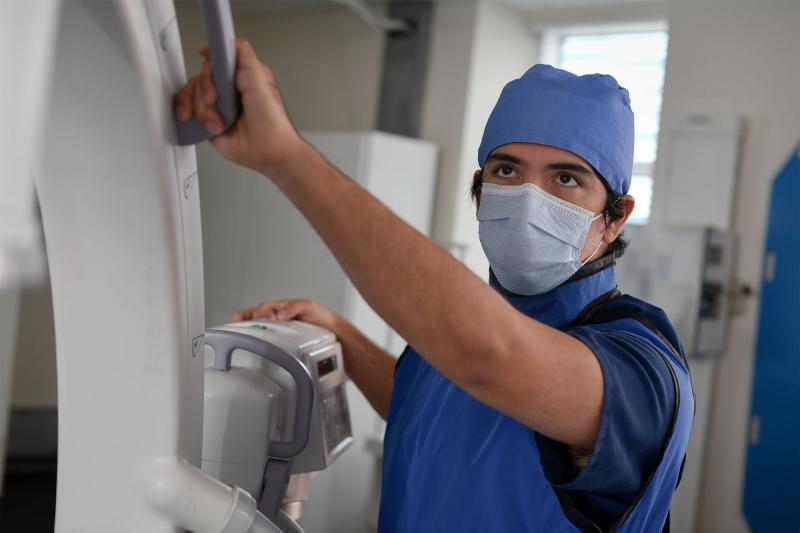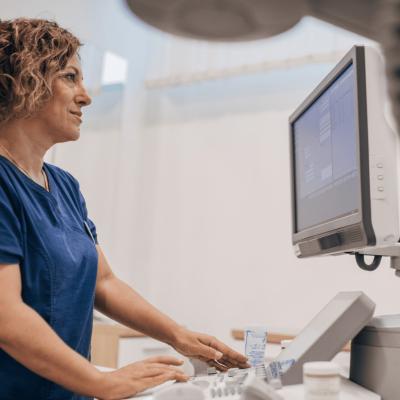- Lukus Staup, BS, RT(R)(MR)

U.S. News & World Report recently ranked the role of Radiologic Technologist No. 13 in its 2021 list of “Best Healthcare Support Jobs” and No. 71 in its 2021 “100 Best Jobs” list.
An X-ray technologist is an expert in utilizing X-ray-producing equipment to produce two-dimensional images of human anatomy for diagnostic purposes. The general public does not typically realize the knowledge level required for diagnostic imaging. Technologists are experts in both human anatomy as well as how ionizing radiation interacts with the body to produce normal photographic characteristics that allow radiologists to diagnose diseases and pathologies.
Workplaces in which this skill is practiced range from hospital settings to sports arenas. The efficiency and portability of modern X-ray equipment allow for this flexibility in use. Besides a well-paying occupation, the growth within the field is substantial. In actuality, the term “Radiologic Technologist” is not specific to X-ray technologists. This is more of an umbrella term for X-ray, CT, MRI, Nuclear Medicine, and Sonography. This is why you often see the imaging department in hospitals referred to as the radiology department. These modalities can vary significantly, and not all of them utilize ionizing radiation, but these are all areas where an individual who works in the healthcare imaging field can grow into.
The U.S. Bureau of Labor Statistics reported in May 2020 a total of 206,720 employed radiologic technologists in the United States. The healthcare imaging community is small, but proud. A career as a radiologic technologist will be anything but static, with opportunities for growth and lifelong learning.
Requiring an associate’s-level diploma (two years), this highly demanded and essential job class has enormous opportunity for growth within the world of medical imaging. Although the Bureau of Labor Statistics previously estimated a 9% growth in the Radiologic Technologists role from 2020-2030 (Bureau of Labor Statistics, 2021), this has undoubtedly changed with the global COVID-19 pandemic.
Previously thought to be less vulnerable to typical economic recessions, “COVID-19 seems to have dramatically accelerated the already high degree of churn in healthcare labor markets,” according to a 2021 article in the International Journal of Environmental Research and Public Health. Most likely because of a fear of COVID-19 impacts on their personal safety, radiologic technologists began a mass labor market exit at the beginning of the pandemic in March 2020, from which we have yet to recover. As of right now, there is massive demand for imaging technologists in all modalities. Although the U.S. Bureau of Labor Statistics and U.S. News & World Report convey a median salary of $62,110 annually, the current demand is finding technologists securing much higher wages than the average.
Whether or not you have considered the field of Radiologic Sciences, If you have never considered the field of Radiologic Sciences, or you have, now would be a good time to make the move to become a Radiologic Technologist! This ever-growing field will continue to flourish with constant technological advancements. For technologists already in the field, they will continue to benefit and grow right along with it.
About the Author

Lukus Staup, BS, RT(R)(MR), serves as a Radiography and Advanced Imaging Instructor at AdventHealth University. Learn more about AdventHealth University’s Radiography program in Orlando, AdventHealth University’s Radiography program in Denver, and AdventHealth University’s online programs in MRI, Vascular Interventional, and CT.


